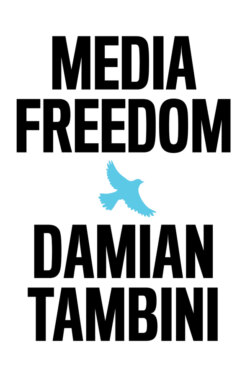Читать книгу Media Freedom - Damian Tambini - Страница 21
Media Policy Stasis: Why Theoretical Confusion Matters
ОглавлениеBecause of rapid technological change in methods of imparting and receiving information, liberal democracies will necessarily have to rebuild their media systems – both public media and the wider governance of private media – in coming years. They will do so at a time of unprecedented upheaval when the undisputed superpowers of the world may no longer be democracies, and when powerful pressures of both globalization and balkanization threaten existing communication freedoms. That they do so in a condition of such disarray, such dispute over the basics, is alarming.
This book takes to heart the insight from institutionalism in political science: namely that ideas matter, that they can provide the orienting values for new institutional settlements.91 One such idea is media freedom. The current juncture requires a clear normative theory, to guide institutional and legal renewal, which is lacking. All too often the only guidance the value of media freedom provides is blanket prohibition on new forms of accountability for the media, and even a chill on debate about media regulation, any form of which is dismissed as an attack on the pristine wisdom of media freedom.
We also require legal and doctrinal consistency: principles and standards that can be applied consistently during a maelstrom of technological changes that are undermining widely held definitions of what ‘media’ and journalism are. A common conceptual understanding of media freedom as an emerging standard in the international rules-based order promises to provide at least some guidance. But current law on media freedom is failing to answer some of the most basic questions.
To address the scale of changes currently faced by media systems will require radical remaking of institutions at every level: from the constitutional law basis of freedom of expression, to the structure for public investment and management of media organizations, to the overall balance between self-regulation and the co-regulatory interface with the law and state regulation. This reform cannot take place in a context where the waving of a loose and woolly flag in the name of undefined, abstract ‘media freedom’ is used to block reform at every turn, resulting in stasis. We need a clear understanding of this concept with which to ground debates about one of the key institutions of democracy.
